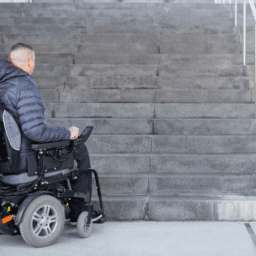What do Michael J. Fox, Muhammad Ali, Janet Reno, Alan Alda, Neil Diamond, and professional cyclist Davis Phinney all have in common? They all have or had different types of parkinsonism, of which Parkinson’s is one kind.
Parkinson’s vs. Parkinsonism
Parkinsonism, also called atypical Parkinson’s or Parkinson’s plus, is the umbrella term used to describe a group of neurological problems. Interestingly, Parkinson’s represents only 10-15% of all diagnosed cases of parkinsonism. Parkinson’s is caused mainly by the degeneration of nerve cells in the brain, while the causes of parkinsonism are numerous, ranging from the side effects of medications to chronic head traumas to metabolic diseases to toxins to neurological diseases.
Parkinson’s is a progressive neurodegenerative disease, which means it will worsen over time and is believed to be caused by the dysfunction of the nerve cells in the brain which produce dopamine. (But, read more about the topic of cause here.) Dopamine is an important chemical messenger that transmits signals between the cells and regulates movement, learning, and emotional response. A dopamine deficiency is linked to Parkinson’s. Though no two cases are alike, a Parkinson’s diagnosis requires that you have two out of three of these primary motor symptoms.
- Tremor or shaking: Often called a resting tremor, the trembling of a hand or foot happens when a person is at rest and typically stops when he or she is active or moving
- Bradykinesia: Slowness of movement in the limbs, face, overall body, and/or while walking
- Rigidity: Stiffness in the arms, legs, or trunk
On the other hand, parkinsonism is defined as a clinical syndrome in which a person may have some but not all of the Parkinson’s motor symptoms listed above and other signs related to an additional condition or cause. These indications can range from low blood pressure to the inability to move one’s eyes up and down to dementia.
Difficult to Diagnose
There is yet no definitive test for Parkinson’s or parkinsonism. As you can see from above, the clinical features of parkinsonism and Parkinson’s are similar and often indistinguishable. Thus, if you have movement problems, which include tremors, slow movement, and stillness and wonder whether you have Parkinson’s or parkinsonism, you’re not alone; it’s a challenge to identify. People are often diagnosed with Parkinson’s when they actually have another form of parkinsonism. On the other hand, people can be diagnosed with the general umbrella term parkinsonism when they specifically have Parkinson’s.
Because the root cause and treatment for each form of parkinsonism is different, it’s critical to obtain an accurate diagnosis. For example, the symptoms of vascular parkinsonism mimic the symptoms of Parkinson’s; however, the primary cause of vascular parkinsonism is due to small strokes and is not a neurodegenerative disorder. As a result, people with vascular parkinsonism do not respond to current Parkinson’s drugs, such as levodopa. Because physicians need to rule out many other conditions, it may take time to determine a correct diagnosis and the appropriate treatment.
History
Dr. James Parkinson, a British apothecary, first described Parkinson’s in his article An Essay on the Shaking Palsy in 1817. As researchers and neurologists began studying Parkinson’s, they discovered subtle differences between patients, and therefore they began to define and name various forms of parkinsonism. For example, in the early 1900s, German neurologist Friedrich Lewy discovered abnormal protein deposits on the brain which were often seen in people with Parkinson’s. In his honor, these deposits were later named Lewy bodies. In the 1960s, low levels of dopamine caused by the degeneration of nerve cells were identified in the brains of people with Parkinson’s, which led to the effective medical treatment of Parkinson’s with the drug called levodopa. Progressive Supranuclear Palsy (PSP), also called Stelle-Richardson-Olszewski Syndrome, reflects the combined names of the scientists who defined the disorder in 1964.
Types of Parkinsonisms
Though there are over a dozen different forms of parkinsonism. Next, we’ll discuss the six most common types of parkinsonism and focus on what they are, signs and symptoms, how they’re diagnosed, how they’re different from Parkinson’s, common treatments, and how they typically progress.
- Drug-Induced Parkinsonism (DIP)
- Dementia with Lewy Bodies (DLB)
- Multiple System Atrophy (MSA)
- Progressive Supranuclear Palsy (PSP)
- Vascular Parkinsonism
- Corticobasal Degeneration (CBD)
Drug-Induced Parkinsonism (DIP)
Symptoms of Parkinson’s may be caused by certain medications. As the name suggests, the cause of drug-induced parkinsonism (DIP) is due to the side effects of medications that affect the dopamine levels in the brain. It’s the second most common cause of parkinsonism in the elderly after Parkinson’s.
Drugs that block the action of dopamine are often used to treat psychotic disorders, such as schizophrenia, and neuroleptic drugs, used to treat dementia, are believed to be the primary cause of DIP worldwide. Examples of drugs that could cause DIP include aripiprazole (Abilify), haloperidol (Haldol), and metoclopramide (Reglan). When prescribing these medications, physicians should be cautious and watch for signs of Parkinson’s and other movement disorders.
Often the quickest cure to DIP is to stop or slowly decrease the dosage of the medication causing the symptoms. However, as with any medication, a person should not stop taking it without their doctor's approval.
What’s the difference between drug-induced parkinsonism and Parkinson’s?
Parkinson’s is a progressive disorder, which will become worse over time, while DIP does not. In DIP, Parkinson-like symptoms can begin within four days to one month of starting the medication. However, all the symptoms could completely subside once the effecting medication is stopped, though it may take up to 18 months for all the symptoms to subside.
For more information on drug-induced parkinsonism, read this journal article and/or information sheet.
Dementia with Lewy Bodies (DLB)
Of people with dementia, the type of parkinsonism called dementia with Lewy bodies (DLB) is the second most common cause of dementia, after Alzheimer’s disease in the elderly. Many are diagnosed at first with Alzheimer’s disease due to memory or cognitive disorders and then later as dementia with Lewy bodies as the motor symptoms common to Parkinson’s progress.
Lewy bodies are abnormal deposits of protein (alpha-synuclein) on the nerve cells in the brain. If the production of dopamine, a neurotransmitter, produced by those nerve cells is disrupted due to the buildup of Lewy bodies on those cells, too little dopamine is produced, which can cause the symptoms of Parkinson’s.
What’s the difference between dementia with Lewy bodies and Parkinson’s?
In dementia with Lewy bodies, dementia always appears first. There can also be changes in alertness as well as visual hallucinations. However, because of the presence of Lewy bodies throughout the entire brain, characteristics of this disease not only include cognitive characteristics, but also physical, sleep, and behavioral changes. As the disease progresses, the motor symptoms common to Parkinson’s such as tremor, slowness, stiffness, and walking and balance problems will appear.
For more information on dementia with Lewy bodies, visit www.lbda.org.
Multiple System Atrophy (MSA) -- formerly called Shy-Drager Syndrome
As predicted by the name of this parkinsonism, multiple system atrophy (MSA) affects multiple systems of the body. It affects both the motor skills movement system and the involuntary (autonomic) system of the body. Though the symptoms can often be treated with medications, there is no cure. In addition, there are no drugs that are able to slow the progress of MSA.
What’s the difference between multiple system atrophy and Parkinson’s?
Parkinson’s and MSA both affect the movement control system and the involuntary autonomic control system and early symptoms can make a differential diagnosis a challenge. MSA, however, tends to progress faster than Parkinson’s; balance problems and a stooped posture happen earlier and get worse more quickly with MSA; and autonomic functions such as blood pressure, heart rate, breathing, sweating, bladder function, and sexual problems are more severe in people with MSA.
For more information on multiple symptom atrophy, read this fact sheet.
Progressive Supranuclear Palsy (PSP)
The long name of this disorder describes this condition well.
- Progressive means that the disease worsens over time
- Supra means above. The part of the brain that is damaged is located above the nerve clusters (nuclei)
- Palsy means “weakness”
The nuclei that are damaged in the brain in PSP control eye movements. Consequently, frequently a person with PSP cannot focus their eyes and complain of blurred vision. One of the most common indicators of PSP is the loss of balance, which increases fall risk. In addition, a person with PSP tends to lean backward. Because one of the indicators of PSP is a buildup of the protein tau on the brain cells, PSP is in a group of disorders called tauopathies.
Since people with PSP often do not respond to medications, non-medication treatments are used which include:
- Weighted walking aids to prevent falling backward
- Bifocals or special glasses to remedy looking down
- Stretching exercises to keep joints limber
What’s the difference between progressive supranuclear palsy and Parkinson’s?
People with PSP generally progress more rapidly than people with Parkinson’s. A person with Parkinson’s tends to lean forward while a person with PSP tends to lean backward. Tremors are common in people with Parkinson’s and rare in people with PSP. Speech and swallowing abnormalities are more severe and show up sooner in those living with PSP.
For more information on progressive supranuclear palsy, read this fact sheet and insights from the CurePSP organization website.
Vascular Parkinsonism
Since the word “vascular” refers to the small vessels in the body which carry blood, vascular parkinsonism is caused by one or more small strokes which cause clotting in the brain. It’s mainly characterized by symmetrical lower-body parkinsonism which is exhibited by shuffling and gait unsteadiness. In 2012, former President George H.W. Bush disclosed that he had vascular parkinsonism.
What’s the difference between vascular parkinsonism and Parkinson’s?
As the name implies, vascular parkinsonism is caused by cerebrovascular disease which affects the blood supply to the brain. Vascular parkinsonism is caused by one or more small strokes, while Parkinson’s is caused by a gradual loss of nerve cells. One major difference from Parkinson’s is that it’s not progressive, while Parkinson’s becomes worse with time. Another difference is that there are no tremors in vascular parkinsonism.
For more information on vascular parkinsonism, read this journal article.
Corticobasal Degeneration (CBD)
Even though corticobasal degeneration (CBD) is characterized by the deterioration of multiple areas of the brain, as the name suggests, the parts of the brain most severely affected by this type of parkinsonism are the outer layer of the brain (cerebral cortex) and the deeper region of the brain (basal ganglia). Since these regions of the brain are heavily involved with movement, CBD causes problems with mobility. It is the least common parkinsonism. The symptoms often begin around age 60 and generally include loss of function on one side of the body (asymmetric) at the beginning, though they can progress to both sides of the body, involuntary muscle jerks (myoclonus), and speech and swallowing problems. Though there is no specific treatment for CBD currently, physical therapy, occupational therapy, and speech therapy can help manage the disorder.
What’s the difference between corticobasal degeneration and Parkinson’s?
The main difference between CBD and Parkinson’s is that it usually starts on one side with the gradual loss of use of one hand or leg (apraxia), and there may be little flicks of involuntary muscle jerks. Walking and balance difficulties usually occur later in CBD than in Parkinson’s. Also, in CBD, a person may have trouble with purposeful movements, such as buttoning a shirt or cutting food.
For more information on corticobasal degeneration, read this information page.
Treatment of Parkinsonism
Though there is overlap in treatment between Parkinson’s and the various parkinsonisms, dopamine medication, which is the first line of therapy in Parkinson’s, can also be effective in other forms of parkinsonisms. However, in some forms of parkinsonism disorders, levodopa is not effective.
Common treatments for both Parkinson’s and parkinsonism involve treating the symptoms to provide the highest quality of life with medication and non-medication treatments. A few of the non-pharmacological treatments include the following:
- Exercise to build muscle tone, strength, and flexibility
- Physical therapy
- Occupational therapy
- Speech therapy
- Nutritional therapy
- Individual and family psychotherapy
- Support groups
Below is a quick reference table that provides general characteristics for each of the parkinsonism disorders in this article. Please keep in mind that these are general characteristics, and your specific symptoms may be different.
Types and Characteristics of Parkinsonism |
|||||||
| Type | Parkinson’s Disease | Drug-Induced (DIP) | Dementia with Lewy Bodies (DLB) | Multiple System Atrophy (MSA) | Progressive Supranuclear Palsy (PSP) | Vascular Parkinsonism | Corticobasal Degeneration (CBD) |
| What is it? | Most common Parkinsonism Progressive Neurogenerative disease |
Second most common parkinsonism Caused by certain medication |
Second most common cause of dementia after Alzheimer’s disease | Multiple systems in the body stop working | Slightly more common than ALS (Lou Gehrig disease) | Multiple small strokes cause clotting in brain | Least common form of parkinsonism |
| Signs and Symptoms | Tremors or shakingBradykinesiaRigidity | No tremor at rest Symptoms can start as early as four days after medication and up to a month |
No tremor at rest Dementia appears first Progresses to movement problems |
Involuntary system affected Issues with heart rate, blood pressure, urination and bowel function |
Vision problems Inability to aim & move eyes properly Tendency to fall backward while walking |
No tremors Lower body movement problems |
Asymmetric Involuntary jerky movements Speech problems |
| Progression | Progression varies | Tends to remain static Symptoms can subside |
Progression varies | Progression varies | Progression varies | Progresses slower than other parkinsonism | Progression varies |
| Treatment | Levodopa | Stop taking or change the dose of the offending drug | Medications to treat memory & cognitive function | Does not respond to Levodopa | Higher dosages of Levodopa than PD | Does not respond to PD medications | None available at this time |
| Additional Resources | Parkinson’s | DIP | DLB | MSA | PSP | Vascular parkinsonism | CBD |
Want More Practical Articles Like This?
Much more can be found in our Every Victory Counts® manual. It’s packed with up-to-date information about everything Parkinson’s, plus an expanded worksheets and resources section to help you put what you’ve learned into action. Request your copy of the Every Victory Counts manual by clicking the button below.









